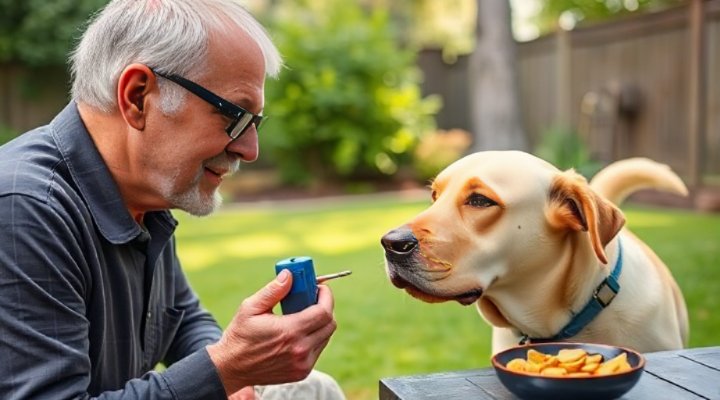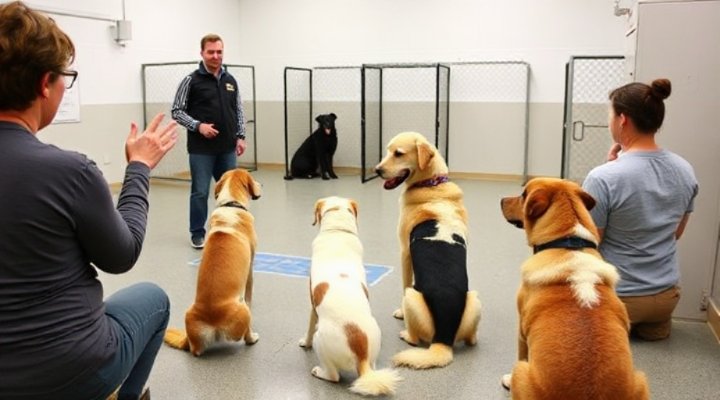Finding the best dog training methods can be overwhelming with so many approaches available. However, scientifically proven techniques consistently deliver the most reliable results for behavior modification. This comprehensive guide will walk you through the most effective methods backed by behavioral science, helping you build a stronger bond with your canine companion.

The Science Behind Effective Dog Training
Modern dog training has evolved significantly from outdated dominance theories. Current research shows that positive reinforcement is not only the most humane approach but also the most effective for long-term behavior change. According to the American Veterinary Society of Animal Behavior, reward-based training creates more reliable responses and strengthens the human-animal bond.
Interestingly, a study published in the Journal of Veterinary Behavior found that dogs trained with positive methods showed better obedience and fewer behavior problems compared to those trained with aversive techniques. This aligns perfectly with what we’ve seen in our positive reinforcement training guide.

Essential Techniques for Best Dog Training Results
1. Positive Reinforcement: The Gold Standard
Positive reinforcement involves rewarding desired behaviors to increase their frequency. When your dog sits on command and receives a treat, they’re more likely to repeat that behavior. This method works because it taps into your dog’s natural learning processes.
For best results:
- Use high-value treats initially
- Time rewards precisely (within 1-2 seconds of the behavior)
- Gradually phase out food rewards as the behavior becomes consistent
Our scientifically proven methods article dives deeper into timing and reward selection.

2. Clicker Training: Precision Communication
Clicker training uses a distinct sound to mark exact moments of correct behavior. The click acts as a ‘bridge’ between the behavior and the reward, allowing for precise communication. This method is particularly effective for shaping complex behaviors.
To get started:
- Charge the clicker by clicking and treating repeatedly
- Begin marking simple behaviors like eye contact
- Gradually shape more complex actions
3. Luring and Capturing: Two Powerful Tools
Luring involves using a treat to guide your dog into position (like moving a treat over their head to induce a sit). Capturing means rewarding spontaneous desirable behaviors (like lying down calmly). Both methods are invaluable in the best dog training toolkit.

Addressing Common Behavior Issues
Even with the best intentions, behavior problems can arise. Here’s how science-based training can help:
Jumping Up
Instead of kneeing your dog (which can cause injury), teach an incompatible behavior like ‘sit’ when greeting. Reward only when all four paws are on the floor. Our behavior problem solutions guide offers more detailed strategies.
Excessive Barking
Determine the cause (alert, attention-seeking, anxiety) before addressing it. For attention barking, teach a ‘quiet’ cue by rewarding moments of silence. The ASPCA provides excellent resources on this common issue.

Advanced Training: Taking It to the Next Level
Once your dog has mastered basics, consider:
- Canine sports (agility, nose work)
- Therapy dog training
- Advanced obedience
Remember that the best dog training is ongoing. Even 5-10 minutes of daily practice maintains skills and mental stimulation. For those interested in taking training further, our online training guide offers convenient options.
Final Thoughts
Effective dog training isn’t about dominance or punishment – it’s about clear communication, consistency, and positive reinforcement. By using these scientifically validated methods, you’ll not only solve behavior issues but also deepen your relationship with your dog. Remember that every dog learns at their own pace, so patience and persistence are key.
Related keywords: dog obedience training, puppy training techniques, scientific dog training methods, positive reinforcement training, dog behavior modification
